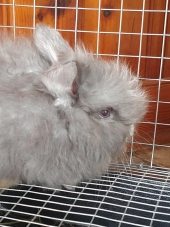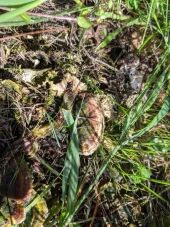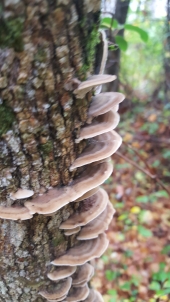
 3
3




"The only thing...more expensive than education is ignorance."~Ben Franklin
"We can easily forgive a child who is afraid of the dark; the real tragedy of life is when men are afraid of the light." ~ Plato
 5
5




"In action, watch the timing."-Tao Te Ching
"Jus' Press"-Ledward Kaapana
 2
2




 1
1




"The only thing...more expensive than education is ignorance."~Ben Franklin
"We can easily forgive a child who is afraid of the dark; the real tragedy of life is when men are afraid of the light." ~ Plato
 2
2




 2
2




"In action, watch the timing."-Tao Te Ching
"Jus' Press"-Ledward Kaapana




 but there is a wonderful 'Arkansas Mushroom and Fungi' group. The admin. is the expert and only allows ID questions...no deviation into edibility or how to cook or you are punished
but there is a wonderful 'Arkansas Mushroom and Fungi' group. The admin. is the expert and only allows ID questions...no deviation into edibility or how to cook or you are punished  ...seriously.
...seriously.
"We're all just walking each other home." -Ram Dass
"Be a lamp, or a lifeboat, or a ladder."-Rumi
"It's all one song!" -Neil Young




Ken W Wilson wrote:Is it dry and tough? If it is, it could be a very old chicken of the woods. Maybe.
"The only thing...more expensive than education is ignorance."~Ben Franklin
"We can easily forgive a child who is afraid of the dark; the real tragedy of life is when men are afraid of the light." ~ Plato




M.K. Dorje Sr. wrote:Carla, I think you might be right. Here is the entry for Berkeley's Polypore (Bondarzewia berkeleyi) on Mushroomexpert:
https://www.mushroomexpert.com/bondarzewia_berkeleyi.html
Some of the photos look pretty close to what you have. See what you think. I've seen the western version of this mushroom (Bondarzewia montana) at the base of old-growth conifers in Oregon. They can get quite large.
"The only thing...more expensive than education is ignorance."~Ben Franklin
"We can easily forgive a child who is afraid of the dark; the real tragedy of life is when men are afraid of the light." ~ Plato




Judith Browning wrote:oh, I hope it's the berkeley's polypore!
I don't remember if you are a 'no facebook' personbut there is a wonderful 'Arkansas Mushroom and Fungi' group. The admin. is the expert and only allows ID questions...no deviation into edibility or how to cook or you are punished
...seriously.
I think you could post there being in the Ozarks? I was in the Missouri group for awhile but the ID's were kind of iffy.
"The only thing...more expensive than education is ignorance."~Ben Franklin
"We can easily forgive a child who is afraid of the dark; the real tragedy of life is when men are afraid of the light." ~ Plato

|
One blast from the ray gun turned half a town into a guy named ray. Just like this tiny ad:
A book about better recipes for green living
https://greenlivingbook.com/
|




